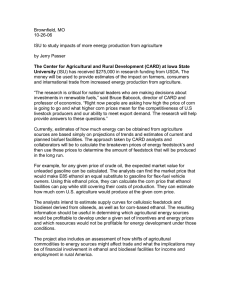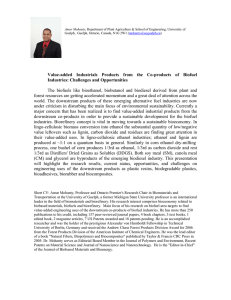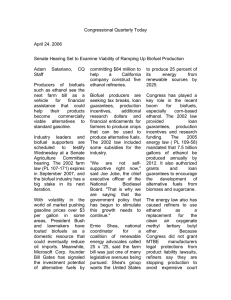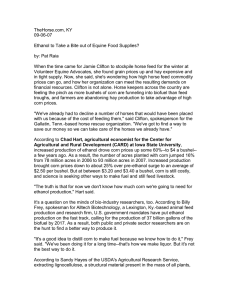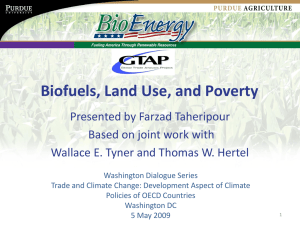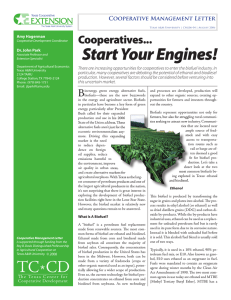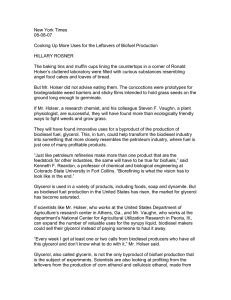Grist Magazine, WA 12-05-06 The Balancing Act
advertisement
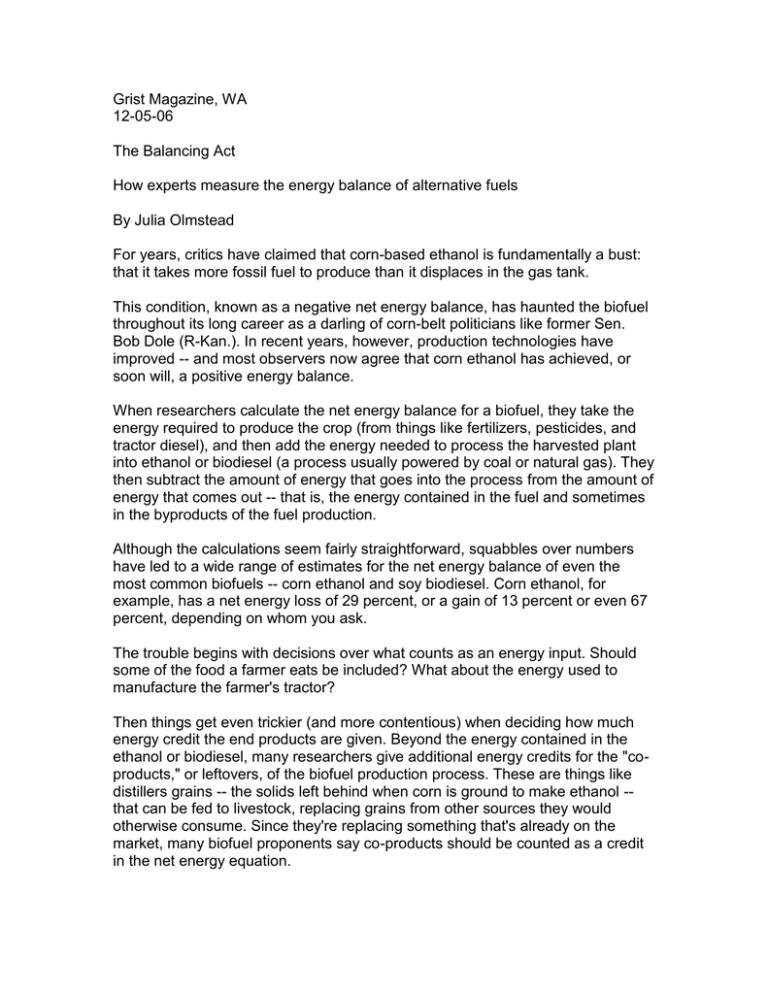
Grist Magazine, WA 12-05-06 The Balancing Act How experts measure the energy balance of alternative fuels By Julia Olmstead For years, critics have claimed that corn-based ethanol is fundamentally a bust: that it takes more fossil fuel to produce than it displaces in the gas tank. This condition, known as a negative net energy balance, has haunted the biofuel throughout its long career as a darling of corn-belt politicians like former Sen. Bob Dole (R-Kan.). In recent years, however, production technologies have improved -- and most observers now agree that corn ethanol has achieved, or soon will, a positive energy balance. When researchers calculate the net energy balance for a biofuel, they take the energy required to produce the crop (from things like fertilizers, pesticides, and tractor diesel), and then add the energy needed to process the harvested plant into ethanol or biodiesel (a process usually powered by coal or natural gas). They then subtract the amount of energy that goes into the process from the amount of energy that comes out -- that is, the energy contained in the fuel and sometimes in the byproducts of the fuel production. Although the calculations seem fairly straightforward, squabbles over numbers have led to a wide range of estimates for the net energy balance of even the most common biofuels -- corn ethanol and soy biodiesel. Corn ethanol, for example, has a net energy loss of 29 percent, or a gain of 13 percent or even 67 percent, depending on whom you ask. The trouble begins with decisions over what counts as an energy input. Should some of the food a farmer eats be included? What about the energy used to manufacture the farmer's tractor? Then things get even trickier (and more contentious) when deciding how much energy credit the end products are given. Beyond the energy contained in the ethanol or biodiesel, many researchers give additional energy credits for the "coproducts," or leftovers, of the biofuel production process. These are things like distillers grains -- the solids left behind when corn is ground to make ethanol -that can be fed to livestock, replacing grains from other sources they would otherwise consume. Since they're replacing something that's already on the market, many biofuel proponents say co-products should be counted as a credit in the net energy equation. Tad Patzek, a professor in UC-Berkeley's Department of Civil and Environmental Engineering and one of biofuel's most vocal critics, authored several negative net energy balance studies. Not surprisingly, the biofuel industry and rival scientists have lambasted him for his views, claiming his calculations use outdated data and are based on incorrect assumptions, including ignoring co-product credits. Patzek agrees that his energy balances would be more positive if he gave credit for the co-products, but says it doesn't make energetic sense to do so. "It's like if you cooked a big dinner and then resold the leftovers to a local restaurant," he said. "Re-sold or not, you've used energy to cook that food, and you could've cooked a smaller dinner." Spend Your $.02 Discuss this story in our blog, Gristmill. Despite critics like Patzek, the majority opinion within academia and industry is that ethanol and biodiesel do result in net energy gains. Most skeptics concede that if the balance isn't positive now, it will be soon. Julia Olmstead is a graduate student in plant breeding and sustainable agriculture at Iowa State University and a graduate fellow with the Land Institute in Salina, Kans., and a freelance writer on agricultural and environmental issues.
